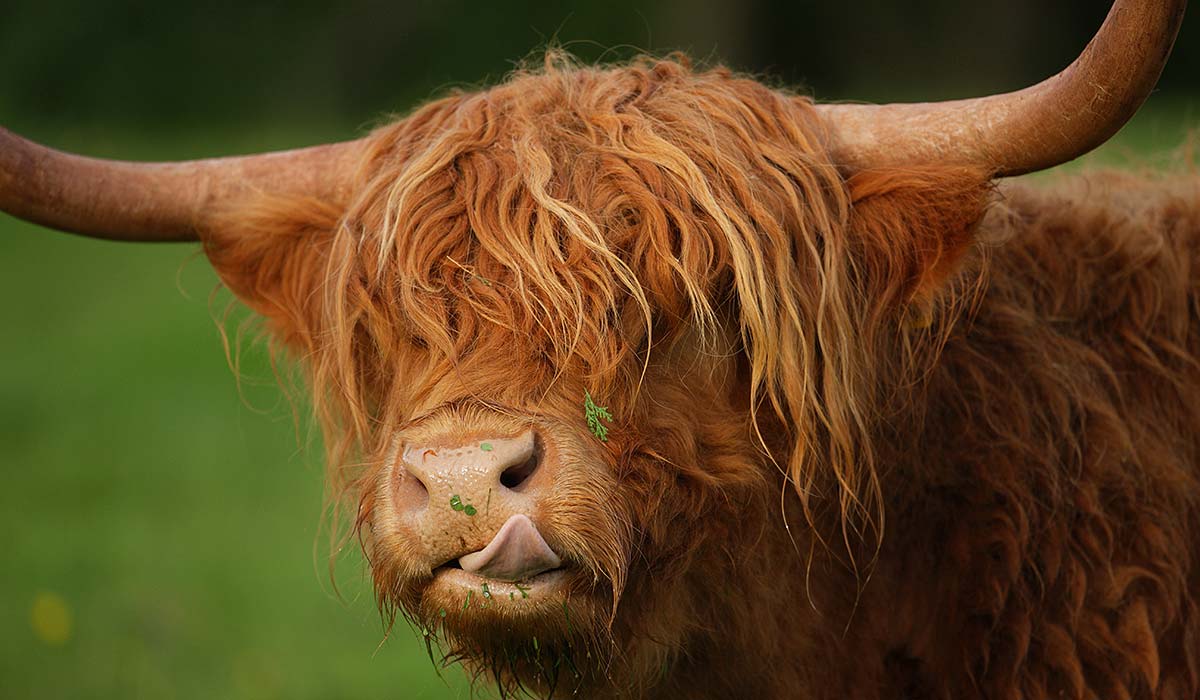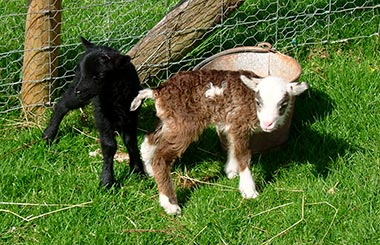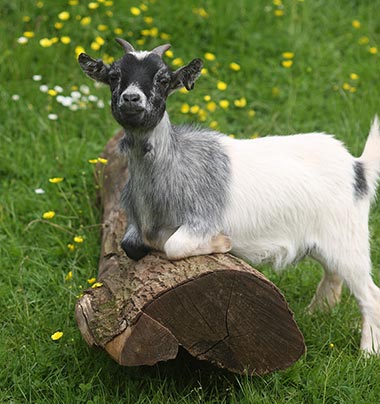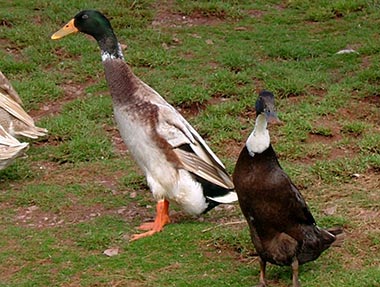
Whilst Puzzlewood is famous for being – well – Puzzlewood, less well known is the fact that Puzzlewood is home to a variety of animals, from cows to rabbits. So by way of introduction, here’s a rundown on all of our four-legged and winged residents.
Highland Cattle
Their horns may look scary – and indeed they once would have been a defence against wild animals – but our gentle giants don’t use them for anything more than digging for food in hard ground. Originating in Scotland, Highland cattle have a fabulously thick and shaggy coat that keep them warm in the harshest of winters. They can live up to 20 years, which is much longer than other breeds of cattle. And unlike other cows that live in herds, a group of Highland cattle is known as a fold.
Soay Sheep

Like the Highland cattle, this hardy breed of domestic sheep originates from Scotland, specifically the island of Soay in the furthest reaches of the Outer Hebrides. The name Soay is derived from Old Norse and means ‘island of sheep’. They look very different to the archetypal domestic sheep and are much smaller. Interestingly, their wool doesn’t need to be clipped – they naturally shed their wool in the spring and the wool is beautifully soft. Considered to be a breed at risk by the Rare Breeds Survival Trust, we take great care of ours – having rescued them, they now have a lovely home at Puzzlewood but are still not too keen on dogs.
Goats
Maisie is a cross-breed. Her lovely coat colour comes from the Golden Guernsey and the softness of that coat comes from her Angoran ancestry. The wool that is produced from the fleece isn’t called Angora but Mohair. Angora goats originated in Turkey and back in the 19th century they were banned from export in an attempt to protect the country’s mohair industry. The Golden Guernsey, not surprisingly, originates from Guernsey. Both breeds are known to be docile and friendly, and Maisie is just that. Regular visitors might wonder what happened to Daisy. Panic not! We found her a new home where her talent for escapology isn’t an issue!
Pygmy goats

Africa, our pygmy goat, is named after her country of origin. She’s an old lady now so, not surprisingly, isn’t really active. Younger pygmy goats love to climb and jump and always look like they’re up to mischief! Pygmy goats are very intelligent animals, friendly and sociable – male pygmies, known as bucks, can be quite stubborn when they want to be.
Shetland ponies
Tallulah, Tara and Tara’s son Nero are firm favourites amongst our visitors. Small in size, Shetlands are incredibly strong and can carry up to twice their own weight. Typical of a native breed originating in the Scottish Highlands, they have very thick coats. Their diminutive size and strength made them an obvious choice as pit ponies in mines from the mid-19th century. They would haul coal or iron ore day after day and would even be stabled underground – a very harsh and often short life.
Donkeys
We have two jennies (female donkeys) called Jasmine and Pippa. Donkeys were domesticated thousands of years ago, most likely in Ancient Egypt or Mesopotamia. Jasmine and Pippa have an easy life, but donkeys in underdeveloped parts of the world continue to be used as a creature of work by people trying to make a living. It may be surprising to know that donkeys are well adapted to desert conditions. Their large ears help to keep them cool, but also to hear distant sounds. And their loud braying, which in true desert conditions can travel miles, means donkeys could keep in touch with their herd in wide open spaces. It’s a skill that Jasmine and Pippa display at feeding time – they become incredibly vocal. And whilst we can’t scientifically prove our theory, we think that donkeys have alarm clocks in their stomachs!
Call ducks
Call ducks are a bantam breed of domesticated duck. And how did they get their name? Literally because of their distinctive call or quack. Back in the 17th century Call ducks were used for hunting in the Netherlands, acting as decoy ducks to lure other ducks into traps. The breed was introduced into Britain in the 1850s and today they range in colours from white to apricot to brown. Sadly, our little flock was decimated. Our surviving duck is very happy in the company of the Indian Runner ducks.
Indian Runner ducks

Originating in the East Indies, this breed of domestic duck was introduced into Europe in the 1830s. Their unusual upright stance and long slender neck – and the way in which they ‘run’ rather than waddle – has also earnt them the nickname of Penguin Duck. Runners are excellent layers. The downside is they’ll lay them anywhere, so finding their eggs can be rather like going on a treasure hunt!
Chickens
Our Silkies always attract the attention of visitors – their fluffy feathers make them stand out from the crowd. No one is quite sure of their origin but they arrived in Europe some 200 years ago and were originally sold as a cross between rabbits and chickens – now that’s inventive marketing!
Rabbits
One of the UK’s favourite pets and much more interesting than other small animals because they are actually active during the day. If you’ve caught ours ‘binkying’ you’ll know what we mean – that’s when they get into a bit of a frenzy, hopping in the air, twisting their bodies and kicking out their feet – it shows they’re happy and it’s a pleasure to watch. If you listen carefully you might even hear our happy bunnies purring – yes really! And did you know that rabbits can turn their ears an impressive 180 degrees? They can pinpoint a sound precisely, an evolutionary feature that will have saved many a wild rabbit from falling prey to a predator. We recently invited our Facebook followers to name our two new female rabbits and we decided that Ginger and Pickle would be perfect. Submitted by Allison Workman on behalf of her eight-year-old daughter, we hope they enjoy their prize of a family ticket to Puzzlewood.
When you visit us, don’t forget to say hello to the animals. If you come to stay with us in one of our cottages, you can even get involved in feeding them - better than looking after them all!







